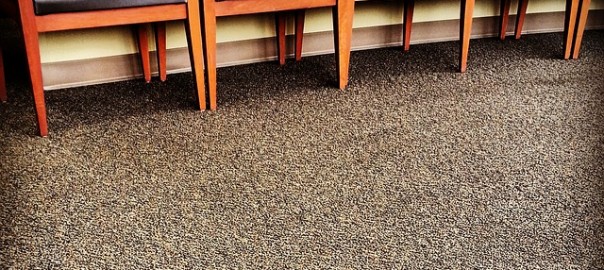Chances are if you are reading this, you are shopping online looking for new hardwood flooring. If you are looking for an estimate, one of the first things you will need is the total square footage of the area you are looking to have done.
Measuring for Floor Installation
Below is a quick method you can use to find an estimate for total square footage. Of course if you are going to have the job done, a qualified contractor will come to your home and measure first. This method is only to get a rough estimate during the sales process.
For the purpose of this post, let’s imagine an area that looks like this:

In this illustration, you have a main room area, a closet and a hallway. This is sometimes referred to an “L shaped room.” Instead of trying to measure the “L” itself you want to block off each section into its own square.
- Begin by “squaring off” each room, hallway or closet. Imagine each room is a square or rectangle. When measuring for flooring do not go outside the boundary of the room, closet or hallway.
- Measure each area length x width and write it down. For a room similar to the illustration, you will have 3 numbers: e.g. – 48×128, 24×48 and 60×128 for example
- Add all numbers together: 48×128 (plus) 24×48 (plus) 60×128 (equals) 132 x 304 or about 278 square feet.
- We recommend adding another 5% for extra pieces
Also make sure you don’t mix up the length and the width. Be sure to always keep the numbers in the same column.

Once you have this number you are ready to get a flooring estimate. When measuring always remember to measure in a straight line. If your tape measure slides to the left or right you are going to get an inaccurate measurement.
Please keep in mind that the number you came up with might vary depending on the type of room you have, baseboards, and any other room features you might have.
Flooring is also sold in different widths. So if you have 278sq ft room and boxes are sold in 100 sq ft you might have to order 300 sq ft. Remember it is always better to over order than to under order.
Also a lot of families and businesses order an extra box or case of flooring in case something happens to the floor or it gets damaged. For instance if there is water damage, something heavy drops on it or some other floor damage happens it is always good to have a few extra pieces on hand just in case.
If you have any questions or would like more information, please don’t hesitate to give Lane Sales, Inc. a call at 800-731-3483, or visit us on our website.

